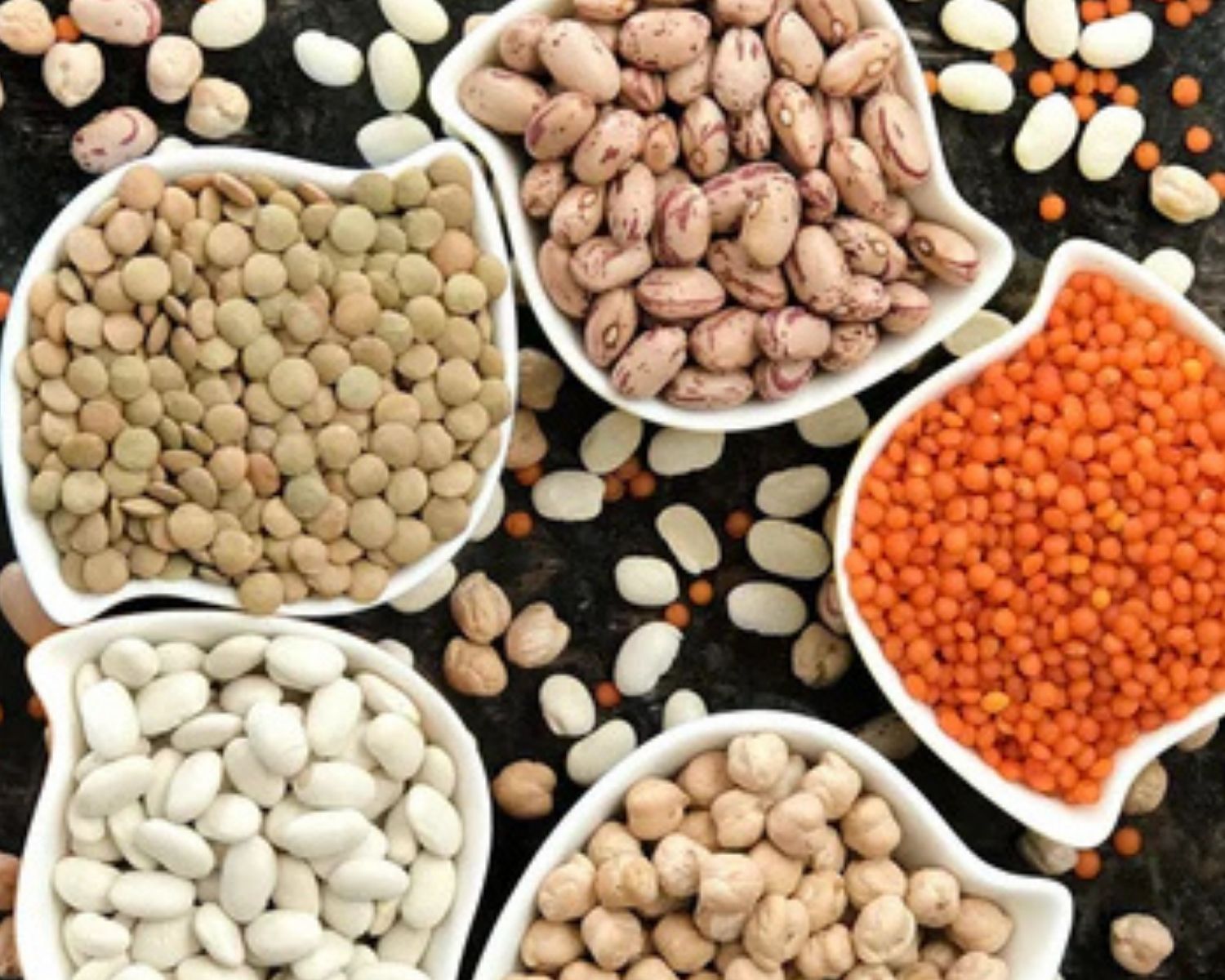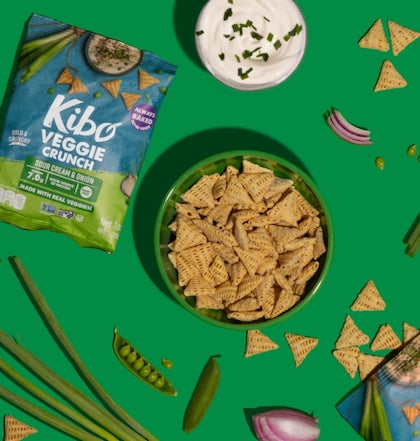Even if you haven’t heard of pulses, you’ve definitely eaten them before. Lentils, beans, and chickpeas might look unassuming, but it turns out that these hearty little legume seeds can do wonders for our diet, earth, and world community.
As a global population, we face issues ranging from an environmental crisis to an increasing demand for food, and pulses like lentils and chickpeas are proving to be a key part of addressing these issues.
We’ve always been big fans of pulses here at Kibo, but for those who aren’t besties with beans yet, here’s everything you need to know about pulses and their benefits.
What are pulses?
Pulses are the edible seeds of plants in the legume family. The terms are often used interchangeably, but pulse refers to the dried seed, whereas legume refers to the entire plant. Here’s one way to think of it: If you take a pea pod, the pod is the legume, while the pea inside is the pulse. Dried beans are a type of pulse, but the fresh green beans you get at the farmer’s market aren’t. To make things even tricker, soybeans and peanuts aren’t legumes either. Their higher fat content disqualifies them, since pulses are classed as being very low in fat.
Pulses have been eaten extensively for millennia, as far back as 11,000 B.C. Today the Food and Agriculture Organization of the United Nations recognizes 11 types of pulses:
- Lentils
- Chickpeas
- Dry beans
- Dry broad beans
- Dry peas
- Cow Peas
- Pigeon peas
- Bambara beans
- Vetches
What are the health benefits of pulses?
Pulses might be small and modest looking, but they’re JAM-packed with nutrition. For one thing, they’re a good source of plant-based protein, containing 20-40% of this macronutrient. Just one cup of cooked lentils contains 20 grams of protein that’s essential for so many functions in your body. Commonly served with rice, pulses pack a huge punch and form a complete protein when paired with many grains.
Pulses are also high in fiber and boast a low glycemic index. Lentils, beans, and other pulses are also known to be super gut-friendly, containing slow-digesting resistant starch that helps your microbiome thrive.
They’re also a bountiful source of minerals like iron, zinc, phosphorus, potassium, folate, and magnesium, as well as B vitamins. Pulses also contain phytochemicals called polyphenols, which could help fight heart disease and type 2 diabetes. Some of these polyphenols, like flavanol, are known to be antioxidants and anti-inflammatory.
Big bonus? Eating pulses is great for your heart! Studies have shown that pulses can lower blood cholesterol and blood pressure and improve healthy weight management, all of which are factors in helping avoid heart disease.
How are pulses good for the environment?
- Protein with a smaller carbon footprint
Lentils and other pulses have the potential to be a prominent player in the fight against climate change. Their carbon footprint is vastly smaller than those of animal-based proteins. According to Carbon Cloud, lentils have a climate footprint of 1.1 pound of CO2E per pound, compared to eggs at 4 pounds, chicken breasts at up to 20, and steak at up to 56.
The more people choose to go plant-based or swap out meat for proteins like lentils and chickpeas, the more greenhouse gas emissions we have the potential to save.
- They’re highly water efficient
Pulses are relatively very water efficient compared to other sources of protein. Essentially, they drink water from a shallower depth, which leaves more water deep in the soil for the next crop, increasing the water efficiency of the entire crop rotation.
- They have a low wastage footprint
Wasted food is not only a poor use of sustenance that could be diverted to feed the hungry, but it also contributes to 11% of greenhouse gas emissions, taking up more space in landfills than anything else. In developing countries, most losses occur during transportation and production, whereas in developed countries like the U.S., 43% of food waste comes right from our homes.
In the U.S., we discard 30-40% of our entire food supply and this is highly preventable. All that wilting produce in the fridge adds up! Pulses, on the other hand, can be stored for long periods of time and transported to distant populations where they’re needed without losing their nutritional value or going bad.

- They’re climate resilient
With their broad genetic diversity, pulses also include climate resilient varieties. Not only as a dried, shelf-stable product, but also as the crop itself, they’re much hardier than most other plants. Pulses are able to withstand severe weather like droughts and floor, where other crops fail.
- They replenish the soil
One of our favorite things about pulses? They also foster sustainable agriculture with their amazing powers of soil conditioning! Their nitrogen-fixing properties can help improve soil fertility, which in turn maximizes the productivity of farmland.
What does nitrogen-fixing mean? Let’s go back to science class for a second.
Nitrogen is a component of chlorophyll that’s central to basic photosynthesis, so it’s essential for all plants. Through a process of symbiosis, pulses like lentils and peas draw N2 from the soil atmosphere through small nodules on their roots. The bacteria, or rhizobia, in these nodules then convert the atmospheric N2 into ammonia that is turned into organic compounds and used for growth.
Their higher nitrogen-to-carbon ratio means they leave behind nitrogen-rich crop residues that replenish the soil and provide extra nutrients for the next crop that grows, reducing the need for fertilizers.
- They create more biodiversity
Soil fertility goes hand in hand with enriched agro-biodiversity, so an intercropping system that uses pulses helps create a more biodiverse landscape for animals and insects. By nourishing the development of microorganism activity in the soil, pulses help encourage microbial communities that are beneficial for a flourishing crop and environment.
How are pulses good for food security?
In 2050, the world’s population is estimated to reach 9.7 billion people. That means there’s an ever increasing demand for food. Millions of people suffer from hunger, food insecurity, and malnutrition because they can’t afford diets that meet their nutritional needs.
In many countries where malnutrition looms large, vast regions could be used to produce pulses as an alternative to meat, dairy, and fish (expensive sources of protein that are economically inaccessible for many). The protein obtained from pulses is significantly less expensive compared to animal foods.
Pulses are suitable for many marginal environments and could enhance production systems sustainably. Because pulses are drought-resistant and able to supply groundwater to companion crops, they provide a promising solution for people living in dry environments where food security represents a challenge.
Because food waste from dry pulses due to spoilage is very low, pulses have a long lifespan that makes them a good option for food surplus aid to food insecure populations.
So why do we love these little legumes? Pulses are healthy, nutritious and easy to cook with. Because pulse crops help decrease greenhouse gasses, increase soil health, and improve water usage, growing them promotes sustainable agriculture.
Where should you start with pulses? For a simple swap, try salty snacks like lentil chips and chickpea chips for a boost of that all-important plant-based protein. Whether you’re fully vegan or just dipping your toes into a more climate-friendly way of eating, pulses have a lot to offer!
Sources:
National Library of Medicine, Nutritional and health benefits of pulses
Harvard School of Public Health, Ask the Expert: Legumes and Resistant Starch
 Reviews
Reviews






